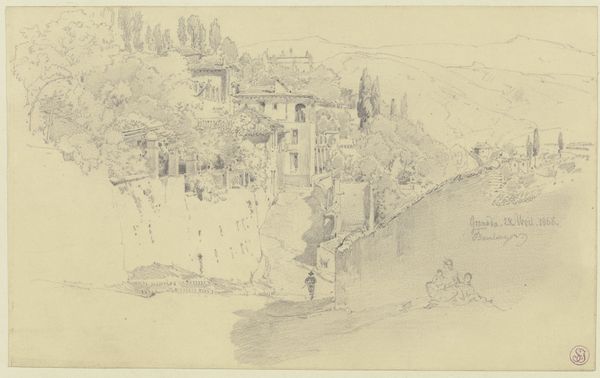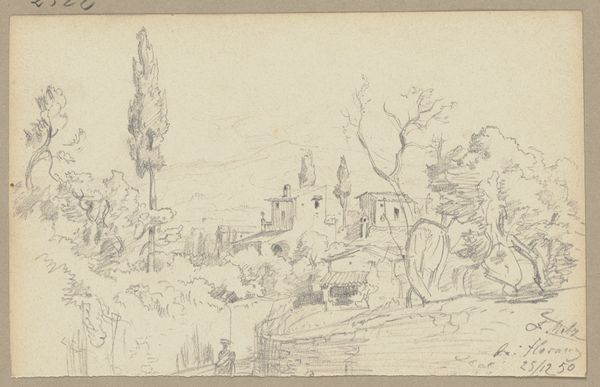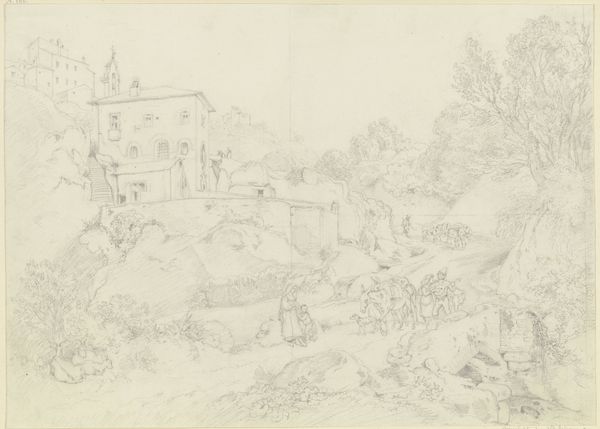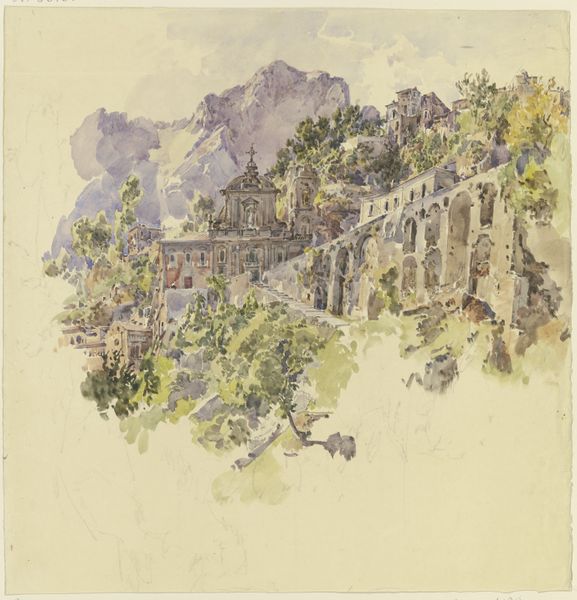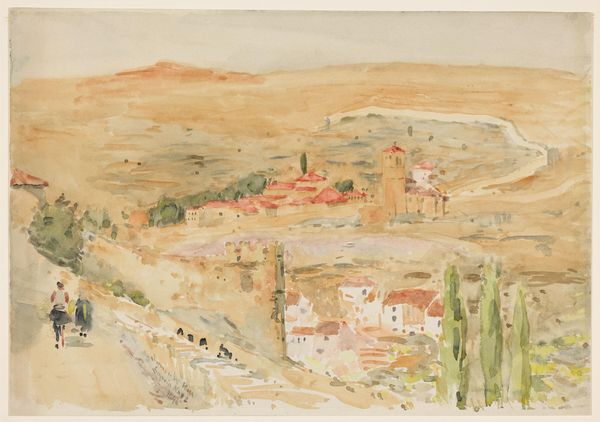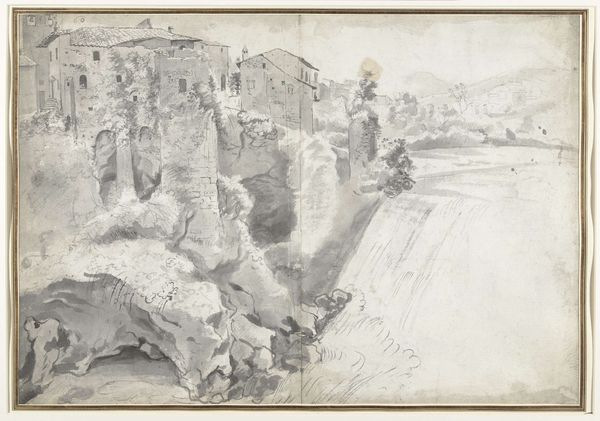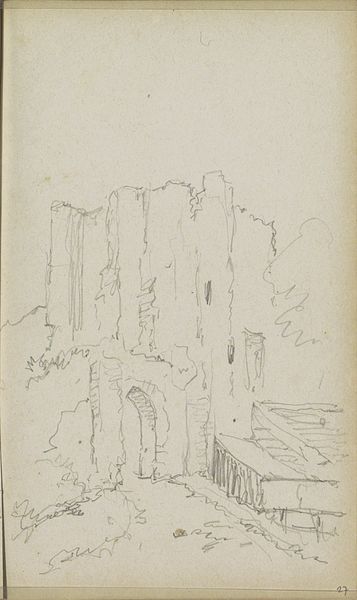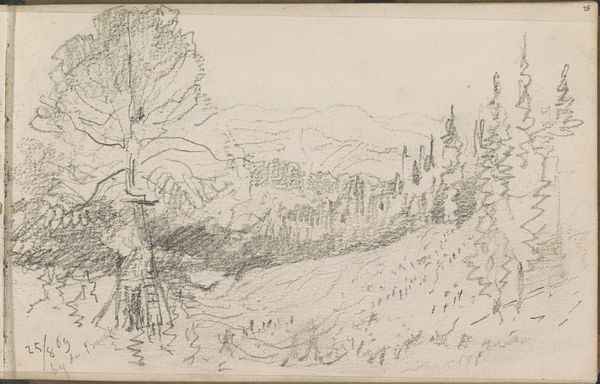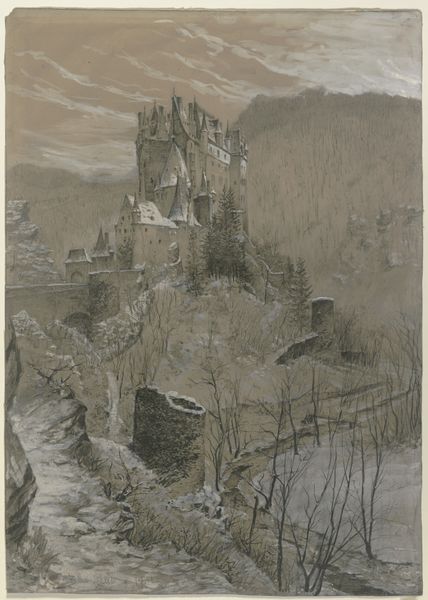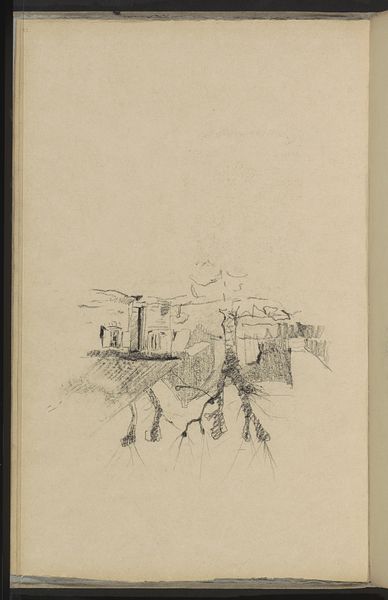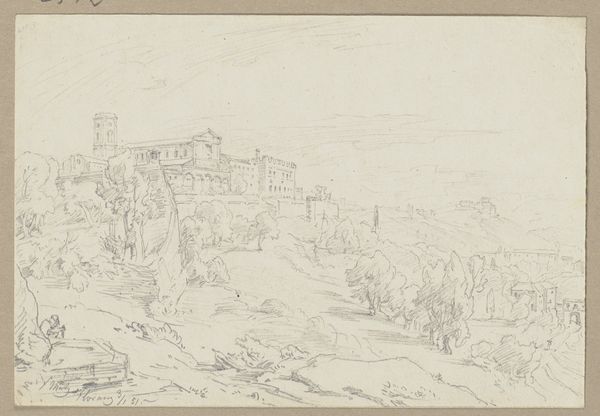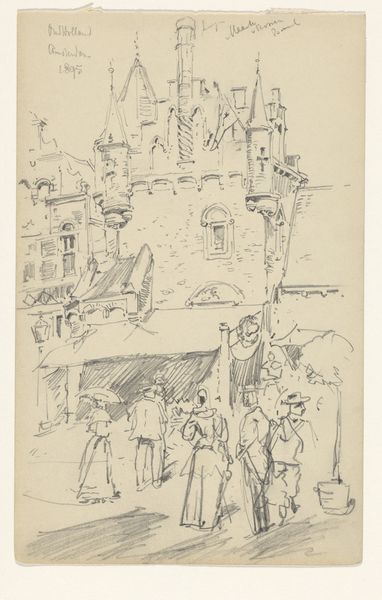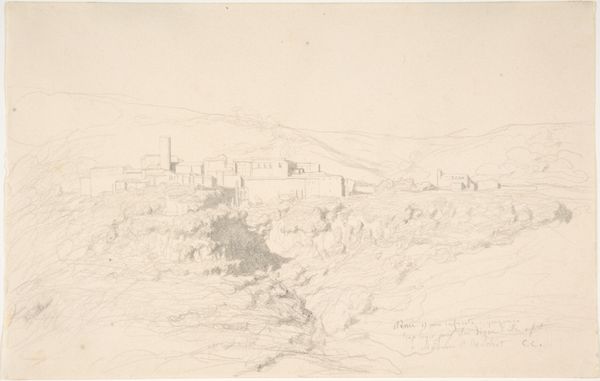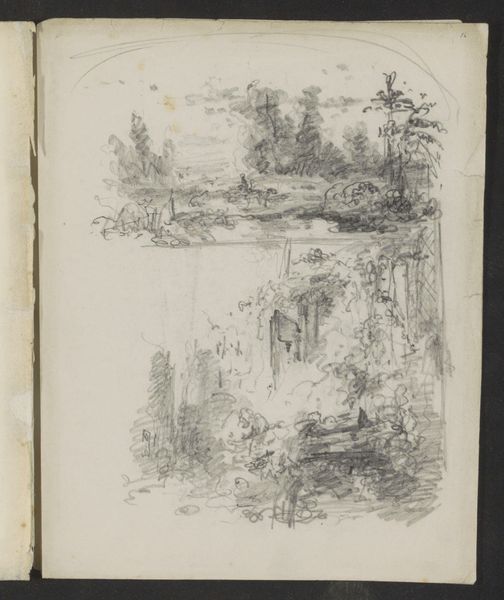
drawing, pencil
#
drawing
#
landscape
#
pencil
#
realism
Dimensions: sheet: 26.67 × 20 cm (10 1/2 × 7 7/8 in.)
Copyright: National Gallery of Art: CC0 1.0
Curator: This evocative pencil drawing is Walter Shirlaw's "Granada," created sometime between 1904 and 1909. Editor: It's remarkable how much atmosphere Shirlaw achieves with such simple means. The drawing has a quiet, sun-drenched feel, a kind of stillness despite the suggestion of movement. Curator: Yes, and the setting itself carries a great deal of cultural baggage. Granada, as a place marked by Moorish influence, the Reconquista, and even the figure of Mariana Pineda resisting absolutist rule. How might those historical layers inform our reading of what seems at first glance to be just a landscape? Editor: I see it as the crossroads of civilizations, represented in these laden mules and the simple architectural forms of the dwellings nestled within a somewhat wilder setting. Donkeys bear loads across civilizations – both humble labor and vital transportation, especially visible to an iconographer given my concern for visual symbolism. Curator: Precisely. We might consider who is typically burdened throughout history and which histories and perspectives have often been neglected within typical depictions of landscape. What does Shirlaw include or exclude? Why might a contemporary American artist be interested in a scene in Spain, and in these travelers in particular? Editor: The verticality of the cypress trees pulls the eye heavenward, and this visual motif is reinforced in art history by the numerous associations between light, holiness, and transformation as they are seen within various symbolic and historic cultures, perhaps indicating a desire for transcendent insight, while the mountains in the distance promise adventure beyond the present experience. It also highlights the interplay between cultural symbols and the emotional responses they trigger in the viewer. Curator: That contrast, I think, is crucial to appreciating the complexity of the work. The specific figures Shirlaw includes tell only part of a story shaped by centuries of conflict and shifting power dynamics in that region. So, while the surface appeal is undeniable, further inquiry could illuminate underrepresented communities and a broader understanding of Granada's story. Editor: The symbols invite contemplation on a personal and universal scale; I see visual echoes of my experience and my past. It reminds us of a shared past but also an enduring set of struggles. Curator: Seeing this scene prompts me to rethink and interrogate our own notions of power and marginality—I feel challenged to consider my role in constructing and perpetuating those structures of seeing. Editor: Thank you. I now also appreciate seeing through your socio-historical lens the symbolic figures set amongst the trees in this light-soaked countryside.
Comments
No comments
Be the first to comment and join the conversation on the ultimate creative platform.
